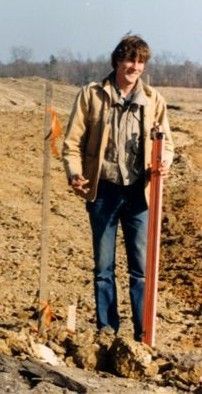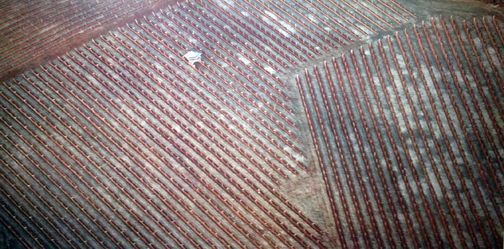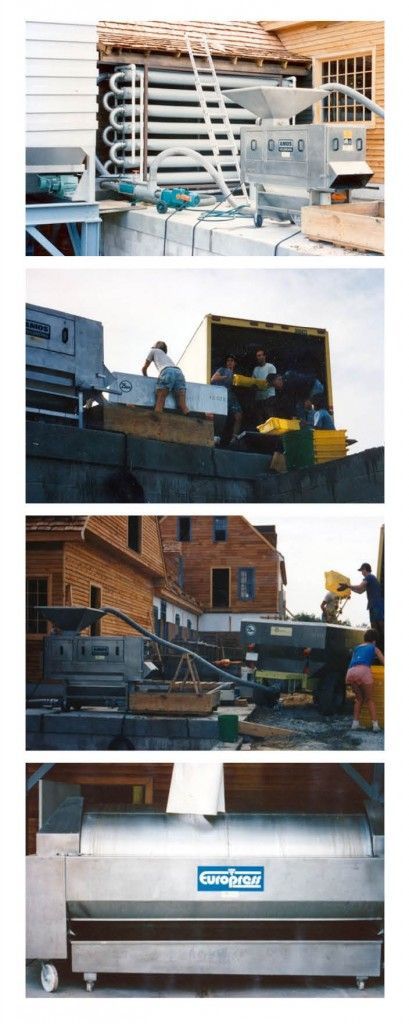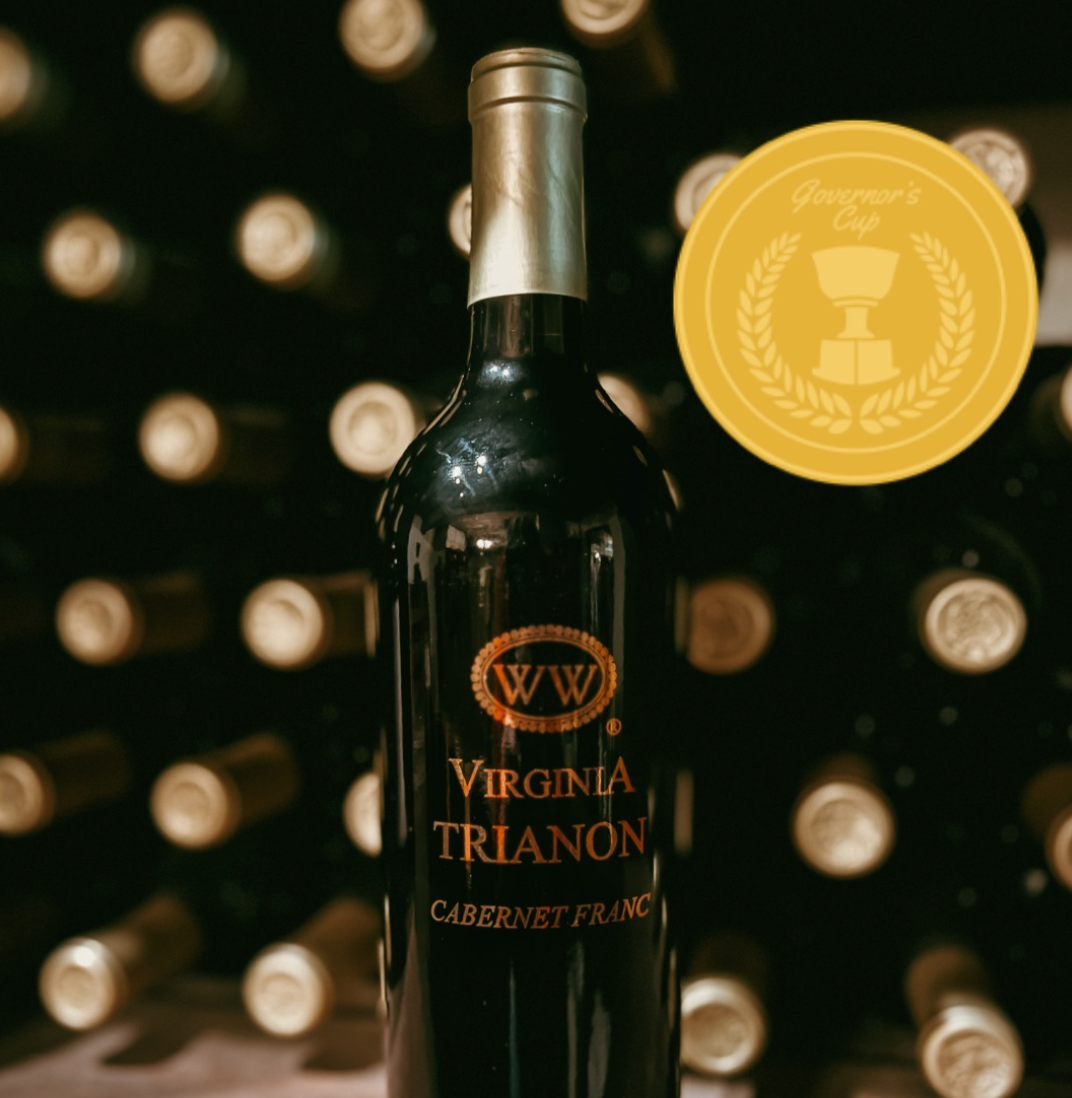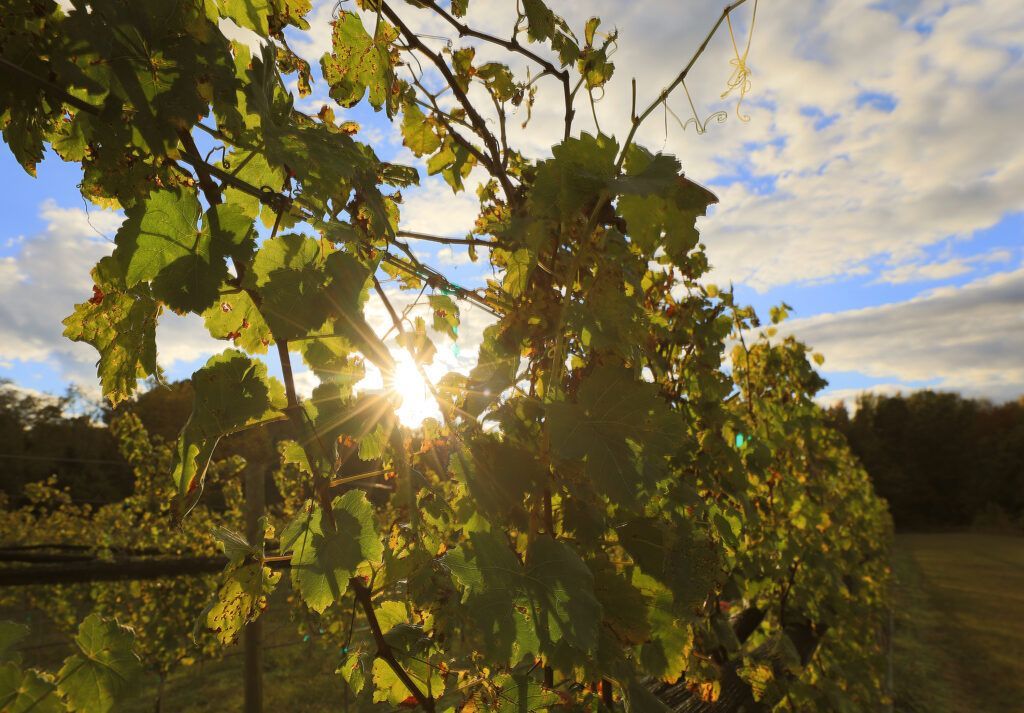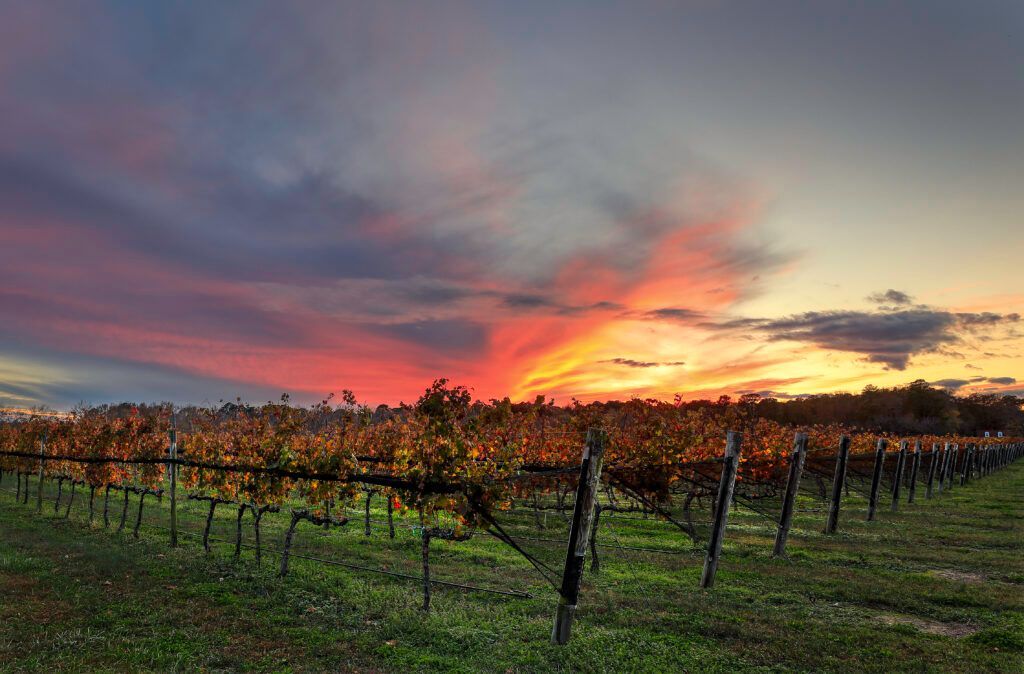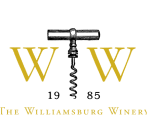Part 15: Construction of the Winery & First On-Site Crush
The big project for 1988 was the construction of the winery and securing the required financing. The first winery building that had been licensed was really a tractor shed with a storage room for the chemicals which had been temporarily defined as the barrel room and wine storage. When the federal agent came for his inspection, he did inquire as to where our bottling equipment was. We had taken the precaution of buying a hand corker at a cost of $10, and we had met equipment requirements to be granted our permit.
The design for the winery had been a joint project between Peggy and myself with plenty of input from Rob and Steve. We needed a barrel cellar, storage space for components, the area for fermentation in the stainless steel tanks, the finished goods inventory (which in a winery quickly becomes very large), the wine shop, the space for tours and tastings and ultimately an office area.
We wanted to build it on the footprint of the barns which had been taken down. We also wanted it to have a typical Virginia look but without getting into the ultra colonial design that has been so overdone. Peggy suggested that a real cupola offering a three hundred and sixty degree view on the farm would be the element to define it. The architect had finished his plans and the cost projection had exceeded our budget.
Rodgers Huff, the banker, suggested we discuss the idea of applying for an Industrial Revenue Bond which required approval from the Industrial Development Authority of the County. A thorough forecast was prepared and submitted via the offices of our lawyer friends at McGuire Woods in Richmond. The inducement was approved and ultimately completed with the issuance of the bonds for a total of $815, 000.
To ensure that the bank had all the necessary documents, we were required to have our personal financial statement prepared by independent accountants. Additional unforecasted soft costs. It all accumulated quickly.
Peter Coe, the owner of Taste Unlimited, commenting on the rising quality of Virginia wines on television.
At about the same time, we were invited to participate in the annual barrel tasting of new Virginia releases at the Trellis. The master of ceremony was Peter Coe, the owner of Taste Unlimited, a fine food and wine store in Virginia Beach. Our James River White was introduced to acclaim. It felt good. Rob kept on opening new accounts and sales were showing the beginning of an encouraging curve but money was flowing much faster by a very long shot than it was coming in.
At the office of the local entrepreneur who had given us a hand with the structuring of the company, we met Cameron Cosby, a young law-school student who also had a financial background from the business school. He was interning with the entrepreneur and proved a very valuable help in the creation of new projections created for the first time with the then revolutionary Lotus 1-2-3 spreadsheets. A set of ten year projections was developed segregating the three different levels of wines (in terms of quality & pricing). A major barrier became evident: the lack of grapes to meet the production levels and the inventories required to achieve the sales goals.
Construction was moving ahead and our order for equipment had been placed with Scharfenberger, a German company, specialized in winemaking equipment. They had opened a small office in VA, which they called Europress, subsequent to their providing the bulk of the equipment for the Prince Michel operation under the guidance of Jochem Hollerith. In very Germanic fashion every little detail was nailed down including the plan for the construction of an elevated platform to position special tanks to allow for gravity emptying and cleaning of the tanks.
The building was taking shape. Our neighbor, Mr. Farmer, a World War II Veteran and a master welder, came and worked on the roof structure of the barrel cellar and the installation of the vertical piers which were designed by the architect who had adapted our ideas to working plans. Ken Crook directed the operation of the framing of the building, and planned the plumbing and electrical circuitry. What amperage were we going to need? Total up all the three phase equipment and one realized that a special line would be required to be installed by the local utility company.
A meeting was set with the delegates of Virginia Power. By that time, it was June and we were expecting the harvest to begin by late August or early September at the latest. The engineers told us that there was no chance that we would have the power in time. The approval process for the engineering alone would require two months. Concerned, I took it up the line to the regional customer service manager and explained our situation. He came over to visit the construction site and told us that we would have power by late August.
In late June, we attended our first wine festival. Jeannette, Eric and Patrick II were presenting our wines to the large crowds gathering outside our table. This was my first introduction to Gordon Murchie who, after years of overseas assignments for the Foreign Service, had acquired a passion for wine and created his own association to promote the world of wine on the East Coast. I had felt naked as we had no literature, no photos, no descriptive material. It seemed that just tasting the wines made clients out of people who were in front of us. A very encouraging fact. Still, I promised myself that at the next festival, we would be better prepared.
All the equipment purchased from Germany arrived in containers, and the team of the son in law of the owner and his technician installed everything with German precision in two days. They asked us about power such that they could test everything. The answer was “not yet”. They left it to us to do the testing. Harvest was still several weeks off.
In the meantime, the Reeder family from Burnley had advised us that there was an established vineyard for sale in Somerset. The owner was prepared to sell it at a reasonable cost. They proposed that we form a joint venture and that they would be willing to manage the vineyard which was located only a few miles from their winery.
We had met with the owner and, after a few sessions, had come to a preliminary agreement. Our sourcing of grapes was now seemingly assured. Everything was falling into place. We organized the financing and acquired another Hungarian tractor and included in the purchase some of the viticultural equipment that had been used on site. Burnley had begun the on-site presence required.
On the docket was to schedule the completion of the federally bonded area of the winery which needed a special on-site inspection and approval by an ATF agent. On the 9th of August, the agent verified the quality of all the locks to the bonded area where work in process is kept prior to removal and application of the federal excise tax. The next day, we had the visit of Carl Jensen, the ABC agent who was always full of constructive recommendations. The building was still being erected above the cellar level where the production areas were located. He also gave us his blessing for the “tax paid area” and the concept of the retail shop that was to be opened sometime later.
During that year, about once a week, meetings had been scheduled with designers and architects to flesh out the concept of the hotel we had planned to build on the same three hundred acre parcel. Considerations included market evaluation and numerous other factors. To test the basic consumer response to our European-style hotel vision, we had a great deal of assistance from Dr. Messmer who initiated intercept studies in the center of Williamsburg as well as other market research evaluations.
County approval would be required. In a world of standardized, uncreative hotel designs, the approach to uniqueness was introducing fresh challenges. On the other hand, financing did not seem to be a barrier. Banks were advising us that they would fund one hundred percent of cost. That was hard to believe though, apparently, there were several hotels built in the area with that capital structure. At any rate, any such financing structure ran against my more conservative comfort level.
Another project was taking place concurrently. The lawyer who had sold us the farm had decided to move ahead with a real estate project. He was fair and offered us to participate. He was impressed with what we were accomplishing and he was planning to put a group together involving the Lewis Waltrip construction company and a number of other persons.
The projections on that project were impressive and called for a strong relatively short term return. We felt that we had our hands full and all our financial commitments were to the winery and, ultimately, in what we thought to be the near future, to the hotel. We agreed to assist and participate as principal and guarantor but without financial disbursement. (More about that project in another section.)
On Monday, August 22, we were advised that grapes would be ready for harvest and brought in at the crush pad by the end of the week. We scheduled crush to begin Friday afternoon and notified the press and the local TV stations.
The utility company was finishing the installation of the upgraded power lines. A quick discussion took place about keeping the last pole in sight of the winery but to bring the line underground to the panel that needed to be County approved for the power be turned on. Trenching, installation of underground cables to the panel, reburying the line. Ready for inspection.
On Wednesday, the inspector arrived and approved the panel but advised us that the power was only two phase. What had gone wrong? We needed three phase power for all our major equipment. I contacted the local head of VA Power, and when I told him of our situation, within minutes, it was acknowledged that three phase was at the final pole but the underground line at been incorrectly installed.
Given that there was no power in that line I offered that our crew would open up the trench during the night such that they could install the proper cable on Thursday morning which they did. Another inspection and the panel was given the clearance. On Friday morning, we had power. Time to test the operation of all the equipment. By noon, we were ready to dump the grapes harvested on site and process them in front of the TV cameras.
Bob West, the anchorman, was thrilled, and the nearly half hour special covered our first crush in our new winery.
The next day, Peggy and I travelled to a festival in Northern VA. We thought we would take it easy after all the excitement of the week, walk around, sip a few wines offered by other wineries and sit down. Surprise, that was not to be. Our tent was mobbed, and Peggy and I alternated with Rob for a solid seven hours sampling and selling our three wines. No rest that day.
But, we drove home happy and convinced that things were taking shape in the right direction.
(To be continued)
Patrick G. Duffeler
Founder & CEO
